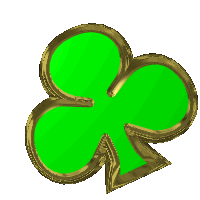
Patrick
A most appropriate hero for Americans!
The person who was to become St. Patrick, the patron saint of Ireland, was born in Wales about AD 385. His given name was Patricius, a middle-class Romanized Briton whose father was a curialis (tax collector) and his grandfather a priest. At 16 he was sold into slavery by a group of Irish marauders that raided his village. During his captivity, he became closer to God and trusted in Jesus Christ for eternal salvation. He escaped from slavery after six years and eventually went to Gaul where he studied in the monastery under St. Germain, bishop of Auxerre for a period of twelve years. During his training he became aware that his calling was to convert the pagans to Christianity.
Patrick was quite successful at winning converts. And this fact upset the Celtic Druids. Patrick was arrested several times, but escaped each time. He traveled throughout Ireland, establishing monasteries across the country. He also set up schools and churches which would aid him in his conversion of the Irish country to Christianity. His mission in Ireland lasted for thirty years. After that time, Patrick retired to County Down. He died on March 17 in AD 461. That day has been commemorated as St. Patrick's Day ever since.
One traditional icon of the day is the shamrock. And this stems from a more bona fide Irish tale that tells how Patrick used the three-leafed shamrock to explain the Trinity. He used it in his sermons to represent how the Father, the Son, and the Holy Spirit could all exist as separate elements of the same entity. His followers adopted the custom of wearing a shamrock on his feast day.
The St. Patrick's Day custom came to America in 1737. That was the first year St. Patrick's Day was publicly celebrated in this country, in Boston.
So what...?
In 406 AD the Rhine River froze, allowing hundreds of thousands of Germanic "barbarians" quick access into the Roman Empire. This was soon followed by repeated sacking of Rome itself, and the eventual destruction of the Empire along with its culture, libraries, histories, and records in about 476.
While this was happening, Patrick was spearheading the conversion of wild Irish Celts into Christians. This was the most peaceful conversion in history, and resulted in a flavor of Christianity that was more scholarly and tolerant than any other since New Testament times. Irish monks quickly attained literacy and mastered the Classical Languages. As Rome fell, the elements of culture migrated to the west... to Ireland... where they were safeguarded against the barbarism on the continent. Monks read, learned, duplicated, and wrote commentaries on these works. What might have been a mass destruction of literature was averted.
In around 600 AD, Irish missionaries began to evangelize Europe, establishing monasteries at Liege, Trier, Wurzburg, Regensburg, Rheinau, Reichenau, Salzburg, Vienna, Saint Gall, and many other places.
"Wherever they went the Irish brought with them their books, many unseen in Europe for centuries and tied to their waists as signs of triumph, just as Irish heroes had once tied to their waists their enemies' heads. Wherever they went they brought their love of learning and their skills in bookmaking. In the bays and valleys of their exile, they reestablished literacy and breathed new life into the exhausted literary culture of Europe" |
This quotation, and many of
the above facts, are from the excellent book:
"How
the Irish Saved Civilization" by Thomas Cahill
